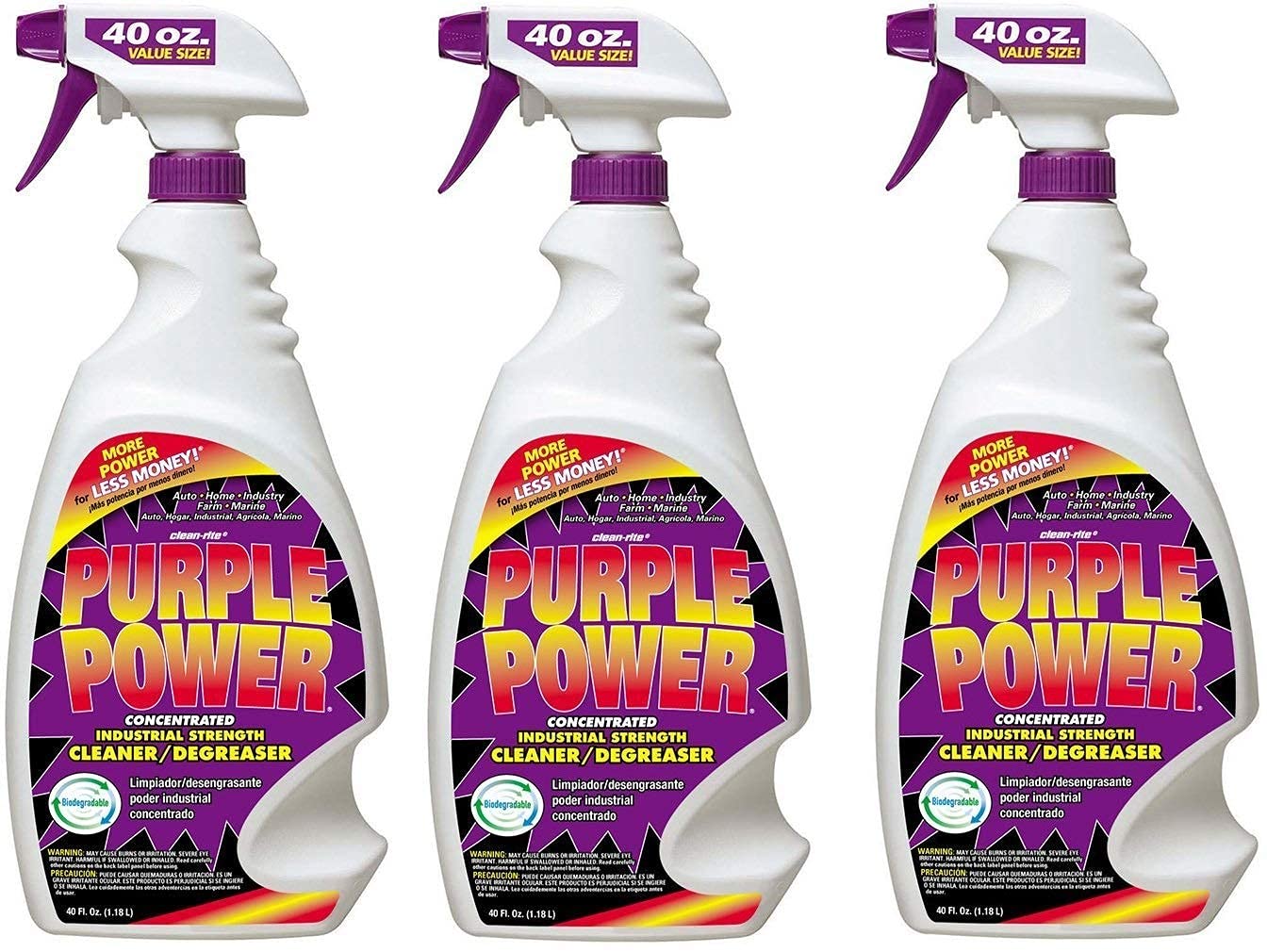Quick Navigation
When it comes to car maintenance, the safety and efficacy of cleaning products are paramount. One such product that often garners attention is Purple Power, a popular heavy-duty cleaner known for its effectiveness in tackling tough grime and stains.

However, questions often arise regarding its safety when used on car paint. This article delves into whether Purple Power is safe on car paint by exploring various critical factors.
Chemical Composition
Active Ingredients
Purple Power is formulated with a range of active ingredients designed to break down grease, oil, and other stubborn contaminants. Key components typically include surfactants, detergents, and alkaline agents. Surfactants help to lower the surface tension of water, allowing it to penetrate and lift dirt from surfaces. Detergents aid in emulsifying oils and greases, making them easier to rinse away. The alkaline nature of Purple Power enhances its cleaning power but also raises concerns about its aggressiveness on delicate surfaces like car paint. Understanding the specific ingredients and their concentrations is essential to assess their potential impact on automotive finishes.
Potential Reactions
The interaction between Purple Power’s chemical components and car paint can vary significantly depending on the type of paint and its condition. Alkaline agents, while effective at cutting through grime, can sometimes react negatively with certain paint types, especially if used undiluted or left to dwell for too long. This reaction might manifest as dulling, discoloration, or even etching of the paint surface. Additionally, surfactants and detergents, if overly aggressive, can strip away protective waxes and sealants, leaving the paint more vulnerable to environmental damage. Therefore, it’s crucial to understand these potential reactions to ensure the safe use of Purple Power on car paint.
Cleaning Efficiency
Dirt and Grime Removal
Purple Power is renowned for its ability to remove tough dirt and grime that regular car soaps might struggle with. It excels at breaking down oily residues, road tar, and other stubborn contaminants. When applied correctly, Purple Power can significantly reduce the time and effort required to achieve a clean, residue-free surface. This efficiency makes it a popular choice among detailers for pre-cleaning heavily soiled areas. However, its potent cleaning action also necessitates caution, as improper use can lead to adverse effects on the paint.
Paint Surface Interaction
While Purple Power’s cleaning prowess is undeniable, its interaction with the paint surface is a double-edged sword. On one hand, it can effectively lift and remove contaminants that would otherwise mar the finish. On the other hand, if not properly diluted or rinsed off, it can leave behind residues that might affect the paint’s appearance. For instance, prolonged contact with the cleaner can lead to streaking or spotting, which can be challenging to rectify. Therefore, understanding how Purple Power interacts with the paint surface can help users optimize its benefits while minimizing potential drawbacks.
Application Techniques
Dilution Ratios
One of the key factors in safely using Purple Power on car paint is achieving the correct dilution ratio. The manufacturer typically recommends diluting the product with water, often suggesting specific ratios for different cleaning tasks. For automotive paint, a common recommendation might be a dilution ratio of 1:10 (one part Purple Power to ten parts water). This dilution reduces the cleaner’s intensity, making it safer for use on delicate surfaces. Adhering to the recommended dilution ratios helps ensure that the cleaner effectively removes contaminants without causing harm to the paint.

Application Methods
The method of application also plays a crucial role in the safe use of Purple Power. Generally, it is advisable to apply the diluted solution using a spray bottle, ensuring even coverage over the intended area. After application, allow the solution to dwell for a short period (typically a few minutes) to let it break down the contaminants. It’s important not to let the product dry on the surface, as this can increase the risk of staining or etching. Following the dwell time, thoroughly rinse the area with water to remove any residual cleaner. Using a soft microfiber cloth or sponge during application can further minimize the risk of damaging the paint.
Safety Across Paint Types
Factory Paint
Factory-applied paint finishes are generally more robust and durable compared to aftermarket or custom paints. These finishes undergo thorough curing processes and often come with multiple layers, including a clear coat that provides an additional layer of protection. As such, factory paint is typically more resistant to the chemicals in cleaners like Purple Power. However, even with factory paint, it’s essential to follow recommended dilution ratios and application methods to avoid unnecessary risks. Testing the cleaner on a small, inconspicuous area before full application can help ensure compatibility and safety.
Aftermarket and Custom Paints
Aftermarket and custom paint jobs, while often more visually striking, can be more susceptible to damage from harsh chemicals. These finishes might not have the same level of curing or protective layers as factory paint, making them more vulnerable to etching, discoloration, or other adverse reactions. When using Purple Power on aftermarket or custom paints, extra caution is warranted. Diluting the product more than usual, shortening the dwell time, and thoroughly rinsing immediately after application can help mitigate potential risks. Consulting with the paint provider or a detailing professional about the product’s suitability is also advisable.
Long-Term Effects
Paint Durability
The long-term effects of using Purple Power on car paint depend largely on the frequency and manner of its application. Occasional use, particularly for heavy grime removal, is less likely to cause significant damage if proper precautions are taken. However, repeated use without adherence to recommended guidelines can gradually erode the paint’s protective layers. This erosion can lead to increased susceptibility to environmental factors such as UV rays, moisture, and pollutants, ultimately compromising the paint’s durability and lifespan. Monitoring the condition of the paint and adjusting the cleaning regimen accordingly can help preserve its integrity.
Surface Integrity
In addition to affecting the paint’s durability, improper use of Purple Power can impact the surface quality and smoothness. Aggressive cleaning action, particularly if the product is not adequately diluted or rinsed, can result in micro-abrasions or uneven surface textures. These imperfections can become more pronounced over time, diminishing the paint’s overall appearance and gloss. To maintain surface integrity, it’s crucial to use the product sparingly and follow up with appropriate aftercare, such as applying a quality wax or sealant to restore and protect the paint’s finish.
User Experiences and Expert Opinions
Common Concerns
Users of Purple Power often report a mix of positive results and concerns. A common issue noted is the potential for the cleaner to strip away wax or sealant layers, leaving the paint unprotected. Some users have also observed streaking or spotting if the product is not promptly and thoroughly rinsed off. These concerns highlight the importance of proper dilution, application, and rinsing techniques. Reading user reviews and feedback can provide valuable insights into common pitfalls and best practices for using Purple Power safely on car paint.

Professional Insights
Auto detailing professionals bring a wealth of knowledge and experience when it comes to evaluating the safety and efficacy of cleaning products. Many professionals acknowledge Purple Power’s effectiveness for tough cleaning tasks but stress the importance of using it judiciously. They often recommend using the product primarily for pre-cleaning heavily soiled areas rather than as a routine cleaner. Professionals also emphasize the necessity of following up with protective treatments to maintain the paint’s health and appearance. Their insights can guide users in maximizing the benefits of Purple Power while minimizing potential risks.
Alternative Cleaning Solutions
Comparable Products
Several alternative cleaning products are available that offer similar levels of cleaning power while potentially being gentler on car paint. Products such as Meguiar’s Super Degreaser, Chemical Guys All Clean+, and Adams Polishes All Purpose Cleaner are popular choices. These alternatives are often specifically formulated for automotive use, balancing strong cleaning abilities with paint-safe formulations. Comparing these products with Purple Power can help users identify the best option for their specific needs and preferences.
Pros and Cons
Each cleaning product has its own set of advantages and disadvantages. Purple Power’s primary strengths lie in its affordability, wide availability, and proven effectiveness against tough grime. However, its aggressive nature and potential risks to paint surfaces are notable drawbacks. In contrast, automotive-specific cleaners might be more expensive or harder to find but offer formulations tailored to the needs of car enthusiasts, providing a safer user experience. Weighing the pros and cons of each product can help users make an informed decision that aligns with their cleaning goals and vehicle care priorities.
Manufacturer Recommendations
Official Guidelines
The manufacturer of Purple Power provides specific guidelines and recommendations for its safe use. These often include dilution ratios, application instructions, and safety precautions. For automotive applications, adhering to these guidelines is crucial to prevent damage to the paint. The manufacturer may also recommend testing the product on a small, inconspicuous area before full application. Following these official recommendations can help users leverage the product’s cleaning power while minimizing risks.
Safety Warnings
In addition to usage guidelines, the manufacturer typically includes safety warnings to alert users to potential hazards. These warnings might cover the risks of using the product undiluted, prolonged contact with surfaces, and the importance of wearing protective gear such as gloves and eye protection. Users should take these warnings seriously to ensure their safety and the preservation of their vehicle’s paint. Understanding and abiding by these safety warnings is essential for responsible and effective use of Purple Power.
Conclusion
Assessing the safety of Purple Power on car paint involves a thorough examination of its chemical composition, cleaning efficiency, application techniques, and long-term effects. While the product offers impressive cleaning power, its aggressive nature necessitates cautious use, especially on delicate paint surfaces. By considering factors such as dilution ratios, application methods, and the type of paint, car owners can

Kevin has been hanging around cars and automobile magazines since he knew what a car is. He grew up in his father’s 1995 Mercedes E320 Wagon and Volkwagon Phaeton W12 2004. He rides his first car, a manual 1979 Porche 911SC.
Currently, he owns an Acura Integra GS-R. During his childhood, he showed a keen interest in how things actually work and fix them. This passion transforms into his eternal love for cars and bestows him an ideal position in one of the leading automobile companies; whenever he finds time, he takes out his Acura and opts for the longest possible route to find hidden wholesome pleasure in a road trip.
Want to read some of the articles written by Kevin? Head to our blog section to find out all the articles written by Kevin.







